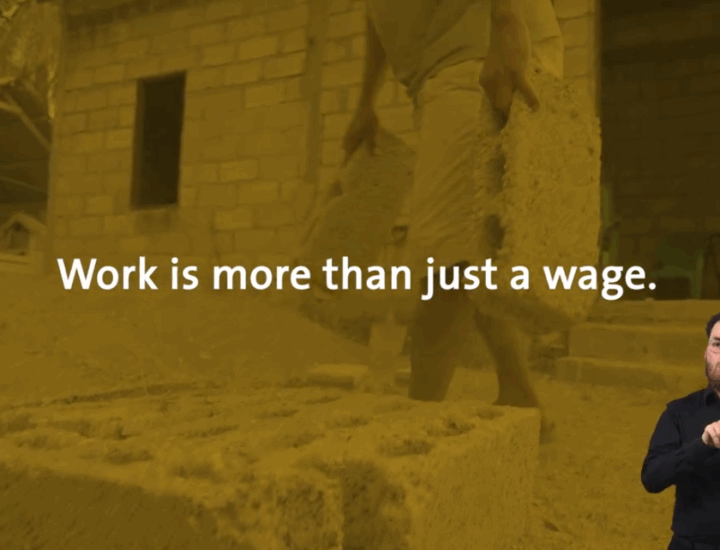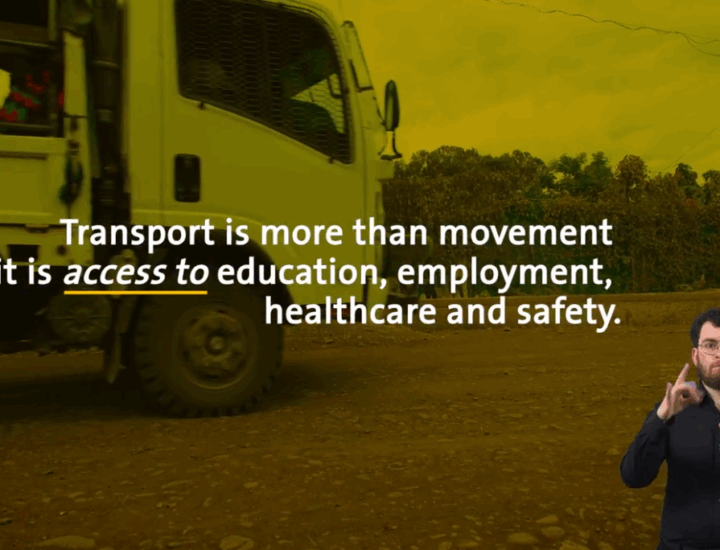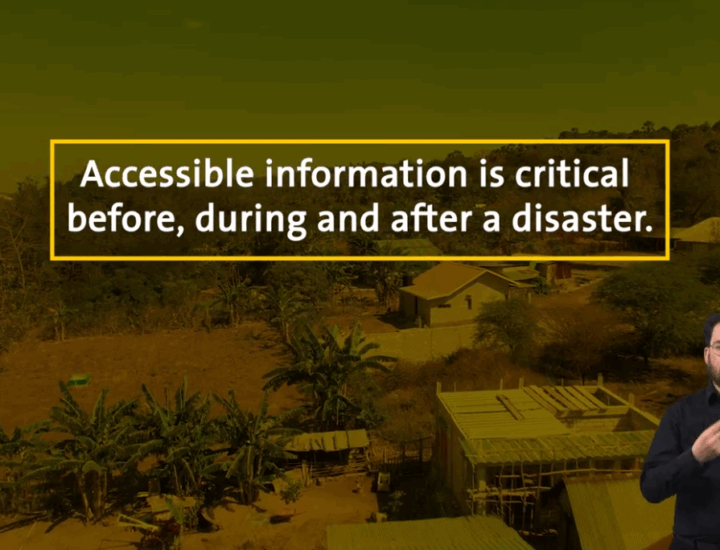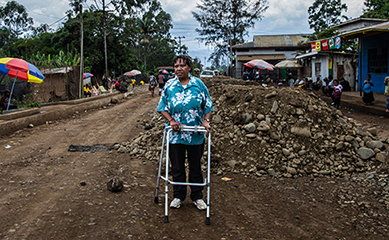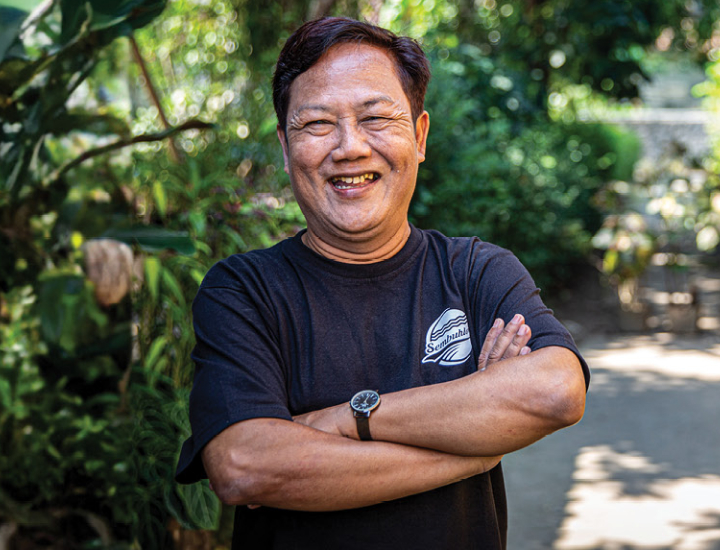#AccessMeansICan

Globally, hundreds of millions of people with disabilities are left behind, locked out of accessing opportunities and spaces others take for granted.
To mark this year’s International Day of People with Disabilities, we’re taking a closer look at what “access” really means, and how access is essential to dignity, participation and equality.
Watch our IDPD 2025 video
Access Means I Can – Inclusion built to last
Access is about more than just ramps, elevators, or tick-box inclusion. As defined by the Convention on the Rights of Persons with Disabilities (CRPD) access means people with disabilities can use and benefit from the physical environment, transportation, information and communication, and public services – in the same way others can.
But access doesn’t exist in a vacuum.
The Preconditions for Inclusion Framework that CBM Australia champions reminds us that access only works when built on strong foundations:
- Non-discrimination
- Accessibility
- Support services
- Participation & empowerment
This IDPD 2025, we honour the strength, vision, and leadership of people with disabilities across our region. Join us to listen, to advocate, to amplify and to build inclusion that lasts.
Because Access Means I Can – and with access, we all gain.
Accessing the physical environment
Buildings, roads, schools, workplaces; our environments shape daily life. But when they’re built without accessibility in mind, people with disabilities are excluded before they even enter the door.
From steep stairs and narrow corridors to unsafe road and footpath conditions, the physical environment can act as a wall that shuts people out of community life. Access means ensuring spaces are designed for everyone, with standards that meet real needs and environments that empower and enable rather than isolate.
When physical spaces are accessible, participation becomes possible.
We travelled to Kupang, Indonesia and Papua New Guinea to meet with Yafas, Terezhina, Simon, Dinna and Ben, who share with us the importance of creating inclusive, accessible spaces so people with disabilities can contribute and belong to their communities.
Accessing employment and community engagement
Workplaces and community spaces are more than bricks and mortar; they’re where people find purpose, dignity, and belonging. But for many people with disabilities, the barriers are stark. Employers unwilling to make accommodations, workplaces without accessibility, and stigma that keeps opportunities out of reach.
Access means having a fair chance to work, earn an income, and contribute to society. It also means being able to join in social and cultural life; from sport to worship to community decision-making.
When barriers are dismantled, people with disabilities don’t just participate, they lead, enrich and strengthen communities.
In Indonesia, access to medication enabled Erik to work and build a house for his family, training empowers Terezhina runs her own business, and in Papua New Guinea Nelsie is able to provide for her family, and the legacy Ben is leaving to his students.
Accessing transport and mobility
Transport is more than movement. It’s the link between home, school, work, and community. Without accessible buses, trains, or safe roads, people with disabilities are cut off from opportunity.
Mobility also depends on access to assistive technology: the voice-to-text software that enables someone to write poetry, the wheelchair that opens independence, the hearing aid that connects a person to conversation. Yet nearly 1 billion people worldwide are denied the assistive tools they need.
Access means freedom of movement. And with it, the freedom to participate fully in life.
In her town of Kupang, Indonesia, accessible transport enables Yani to move with independence, without having to depend on other people for support. In Papua New Guinea, Vicky’s wheelchair enables her to engage with her community just like anyone else.
Accessing healthcare and support services
Healthcare is a basic right, yet for many people with disabilities it’s a demoralising and life threatening struggle. Clinics may lack ramps or appropriate signage, information is often unavailable in accessible formats, and health workers may not be trained to provide inclusive care.
The result is poorer health, avoidable deaths, and perpetuated inequities. The WHO reports that people with disabilities are three times more likely to be denied healthcare and four times more likely to be treated badly in health settings.
Access means dignity in health. It means healthcare systems designed to serve everyone. When that happens, whole communities are stronger.
In Kupang, Indonesia Rafael, Stefy and Indriani, all children who – through access to healthcare, surgeries and assistive technology – were able to attend school, keep up with their peers and dream big.
Accessing communication and information
Communication is at the heart of participation. Without access to information; whether about a local community meeting, a health service, or a disaster warning, people with disabilities are excluded from decisions and opportunities that affect their lives.
Barriers can be physical, like a lack of sign language interpreters, or systemic, like official documents not being available in accessible formats. They can also be life-threatening, when disaster warnings fail to reach people with disabilities in ways they can act on.
Access means ensuring everyone receives, understands, and can use the information they need; in the right format, at the right time. It’s about opening pathways for people with disabilities to participate fully in their communities and to shape their own futures.
Changing environments disproportionately impacts people with disabilities everywhere. Nelsie, from Papua New Guinea, and Yani and Yomi from Indonesia share their experiences with climate change, and the support structures they needed to avoid disaster.
Why IDPD still matters
Every year on 3 December, the world pauses to celebrate the rights, voices, and contributions of persons with disabilities. This day began in 1993 as a UN-designated observance to raise awareness and inspire inclusion.
Today, it is a rallying point; a time to reflect on how far we’ve come, and how much further we must go.
Globally, people with disabilities continue to face exclusion. Too often, the world is built in a way that shuts many out from physical spaces to health services, employment, transport, and more. Even today, many are denied the right to access that others take for granted.
In partnership with Organisations of People with Disabilities (OPDs) and the Disability Movement, CBM Australia remains committed to building a world where everyone is included.
Together, we can make a meaningful difference.


